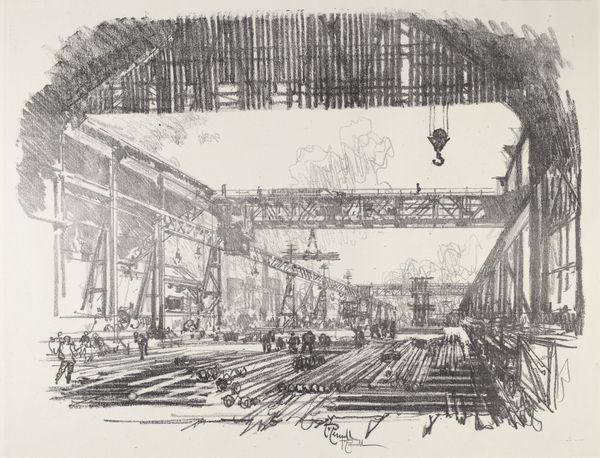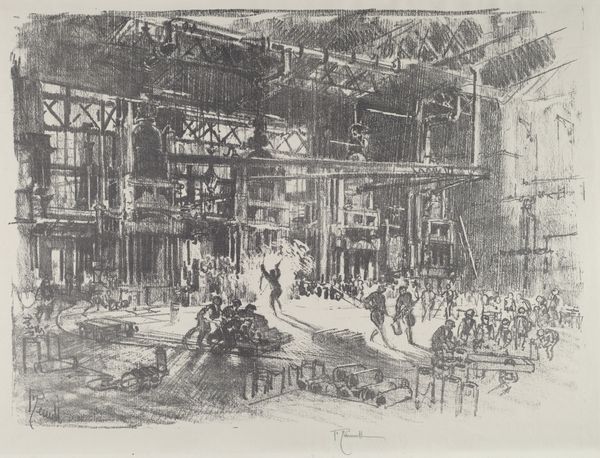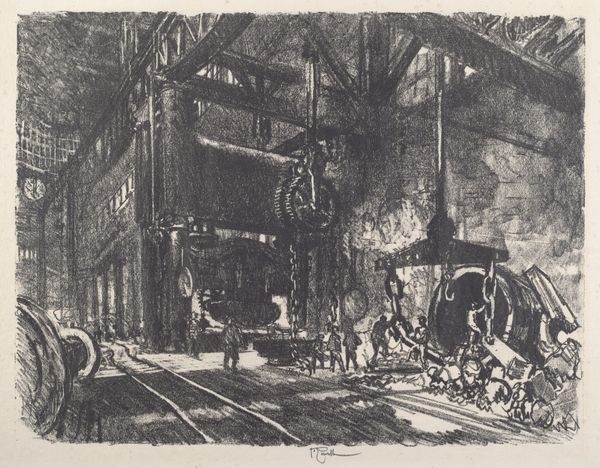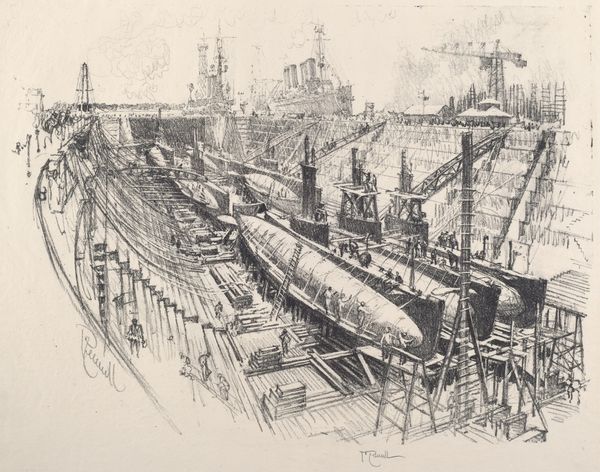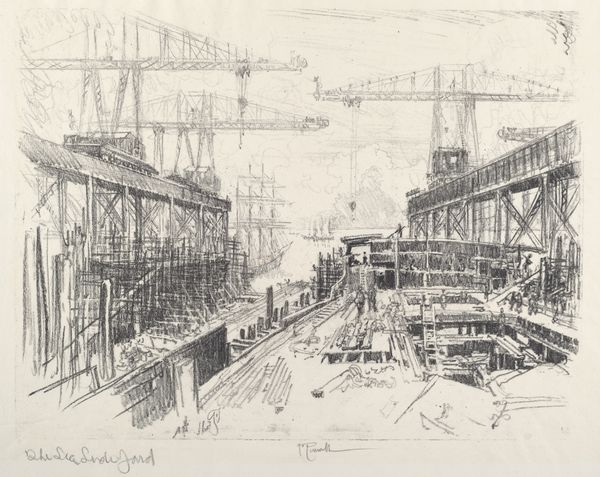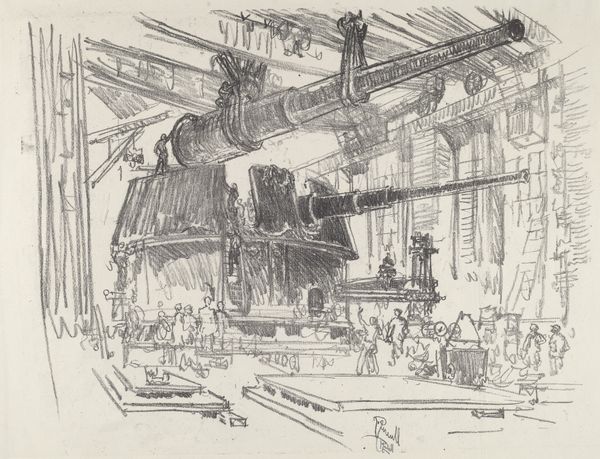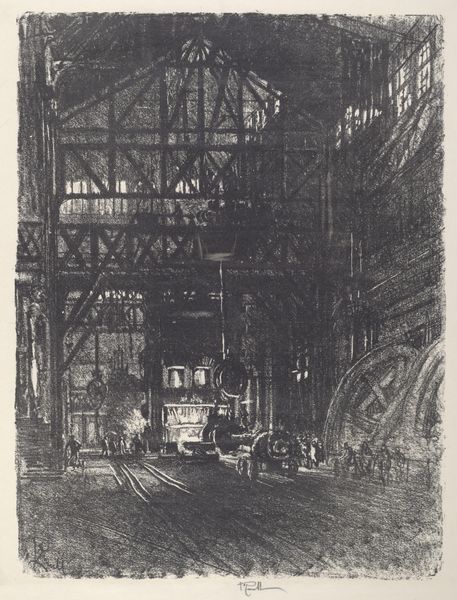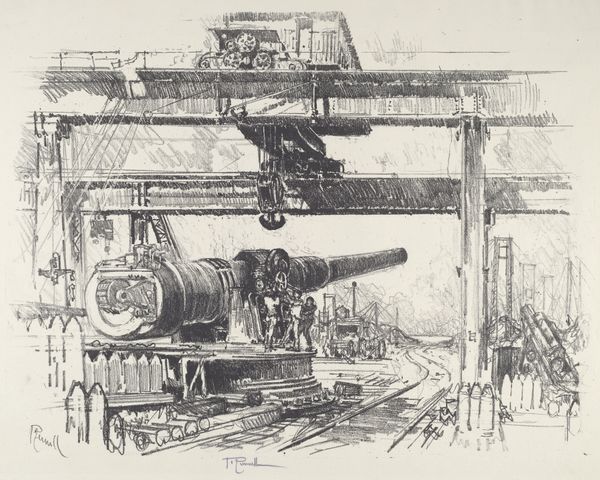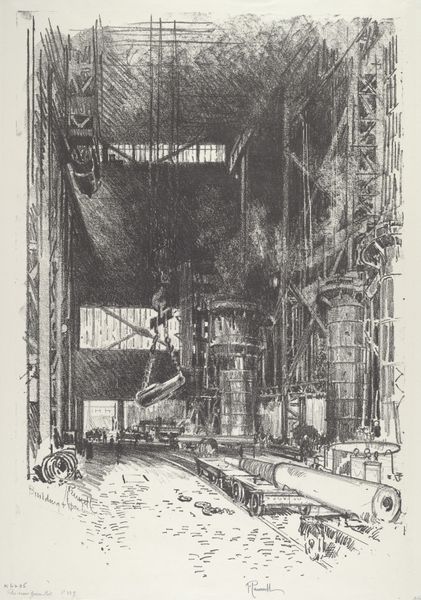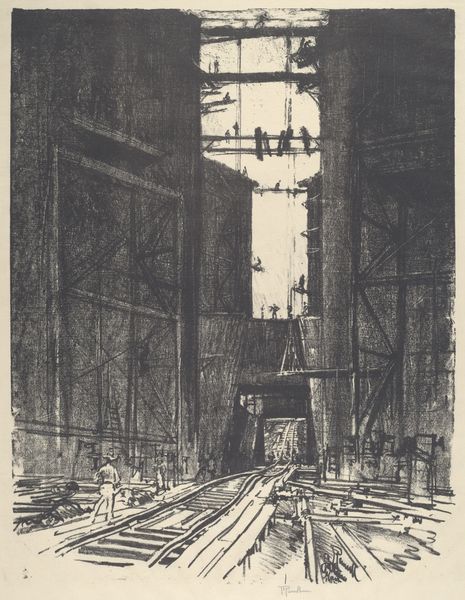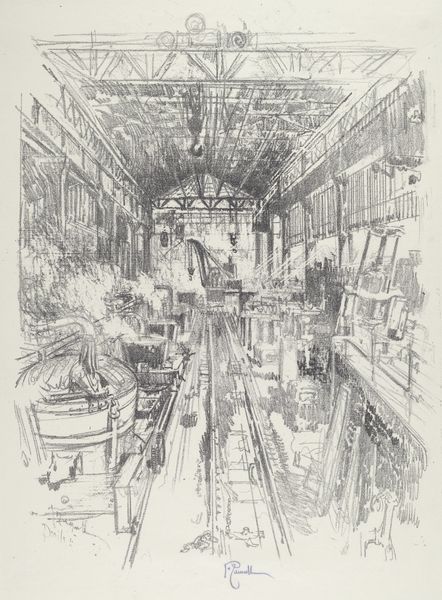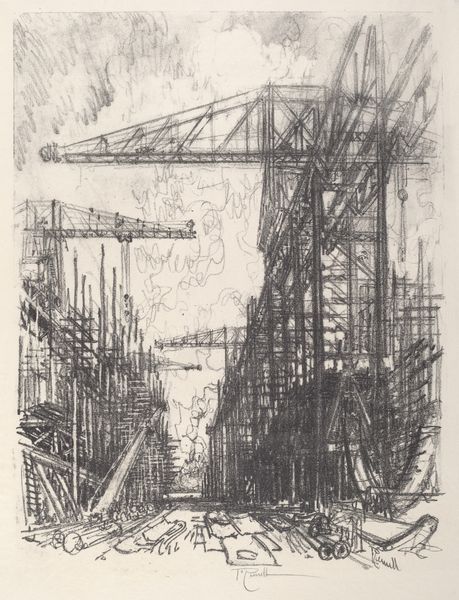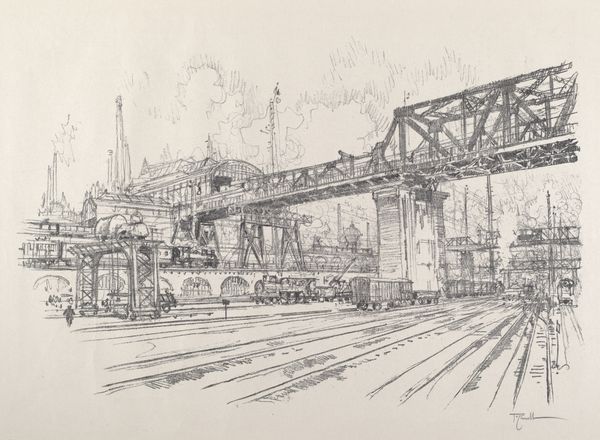
print, etching
# print
#
etching
#
cityscape
#
realism
Copyright: National Gallery of Art: CC0 1.0
Joseph Pennell’s print captures the interior of a factory, filled with colossal machinery and workers dwarfed by their creations. The large shells being planed hint at their ultimate purpose: munitions for war. Notice the prominent overhead crane. This motif of mechanical assistance echoes earlier depictions of divine intervention. Think of classical gods lowered from the heavens to influence earthly events; now, the crane performs a similar function, a modern deus ex machina. This symbol, however, has transformed from a sign of hope to a symbol of industrial might. It represents a new era where technology shapes human destiny. Consider the emotional weight of this transformation. The cold, metallic geometry of the machines contrasts sharply with the human figures, suggesting a psychological tension between man and machine. This scene evokes a sense of awe mixed with anxiety, reflecting our collective, subconscious struggle to reconcile progress with its potential consequences. Pennell's print serves as a stark reminder of how symbols evolve, carrying echoes of the past while adapting to the anxieties of the present.
Comments
No comments
Be the first to comment and join the conversation on the ultimate creative platform.

